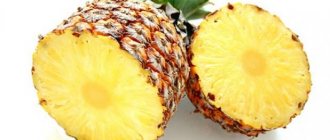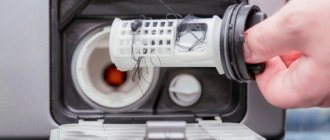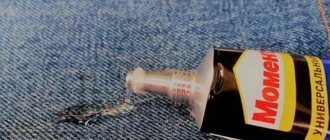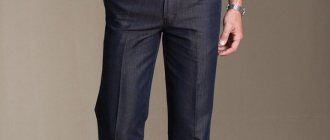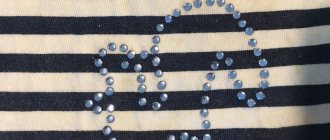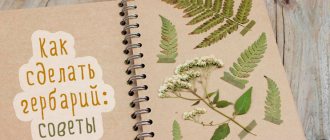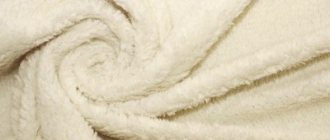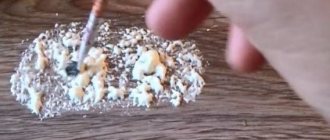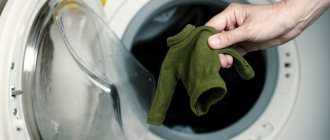General rules and features of caring for jackets
To ensure that your jacket retains its presentable appearance for a long time, follow simple rules for caring for this product:
- After a hard day's work, folds and creases form on the jacket. To straighten the fabric, it is not necessary to use an iron every time - this will shorten the life of the clothing. Better hang your jacket on hangers in the bathroom. High humidity in the room will not only help smooth out clothes, but also eliminate unpleasant odors that may have been absorbed into the fabric during the day;
- Before hanging your jacket in the closet, be sure to remove everything from the pockets. Heavy objects can distort the fabric and create unsightly bubbles on clothing;
- If you rarely wear a jacket, then you should store it in a special plastic case. Such covers can be found in household goods stores, as well as in Fix Price chain stores;
- After each wear, the jacket should be treated with a slightly damp cloth or sponge. This will help remove the layer of dust and lint collected during the day, which easily settles on the suit fabric.
After each wear, the jacket should be treated with a slightly damp cloth or sponge, you can also use a special brush
Reasons for the appearance of iron marks on clothes
Shine, scorch marks, and dirt from the iron occur in the following cases.
- Violation of the rules for wet-heat treatment of products.
- The temperature does not correspond to the recommendations for ironing a certain type of fabric.
- Improper care of the iron, the sole of which can subsequently stain clothes.
- Poor rinsing of things. When it comes into contact with the iron, the remaining detergent begins to “burn”, contributing to the appearance of unsightly stains.
Gloss is most often noticeable on dark-colored fabrics, and tan marks are most often visible on light-colored fabrics.
Is it possible to get rid of stains after ironing?
Methods for removing iron marks vary. The choice of means and methods of control depends on the type of fabric, its composition, and thickness. The fresher the stain, the easier it is to get rid of it. If your clothes are badly burnt and a dark stain remains after the ironing, it is no longer possible to save the item.
General methods for cleaning jackets
Sometimes the jacket gets more dirty than usual, and then a simple damp cloth will not be able to restore it to its proper appearance. Fortunately, there are many ways - both improvised and professional - that will allow you to quickly get your clothes in order before an important meeting.
Handy methods
Traditional methods are famous for their cheapness and accessibility. Each of these ingredients is likely to be found at home, so cleaning your jacket using the following methods will be practically free:
- Toothpaste will help deal with oily stains, such as grease that dripped onto your jacket during a business lunch. Apply a small amount of paste to the stain, rub lightly with your finger or sponge and leave for 5-10 minutes. After this, carefully remove the paste with a damp sponge. Try not to rub - suit fabric can very easily absorb the white color of the paste, which will not be easy to remove. The method is only suitable for light and gray fabrics. Don't use it on black jackets;
Toothpaste copes well with stains on suit fabric - salt is an effective remedy not only for removing dirt, but also for removing the smell of sweat. Dilute two tablespoons of salt in a glass of warm water. Soak a cotton swab or sponge in the resulting saline solution and walk over the contaminated areas. Try not to rub - the jacket may take on a shabby appearance;
Table salt has an excellent effect - it absorbs unpleasant odors almost instantly. - ammonia (ammonia) effectively eliminates unpleasant odors and removes almost any stain. They should only be used in a well-ventilated area, and ideally outdoors. Dilute one tablespoon of ammonia in a liter of warm water. Dampen a sponge with the solution and carefully treat the contaminated areas. To freshen up your jacket, you can additionally treat the armpit area. After this, you need to blot the jacket with a dry cloth;
Ammonia is a very caustic and strong-smelling substance, so its use is only permissible in ventilated rooms - Potatoes can also be used to clean a jacket. Cut the root vegetable in half and use the cut to rub the dirty areas. The jacket should then be wiped with a damp cloth and then dried. It is better to use on light-colored fabrics;
Potatoes are great for removing old stains from suit fabric. - 9% table vinegar can be used in its pure form to clean stubborn stains from a jacket. When using this product, it is recommended to wear household gloves and open the window. Heat a little vinegar in a water bath, soak a sponge in it and wipe the dirty areas. If necessary, leave the vinegar on the stain to give it time to soak into the fabric and remove the dirt. Then use a cloth soaked in clean water to remove any remaining vinegar from the jacket;
Table vinegar is used by many housewives not only in cooking, but also in cleaning things. - soap solution is not suitable for black jackets - marks may remain. All the rest can be cleaned using this simple method. Prepare the mixture by diluting a tablespoon of grated laundry soap in a glass of warm water. Apply the solution along with foam to contaminated areas. Leave to act for a few minutes and then rinse off any residue with a damp cloth.
Laundry soap is another indispensable helper in everyday life.
Special means
Household chemicals and hardware stores can also offer excellent ways to deal with stains on your jacket.
Sticky Buddy
In fact, Sticky Buddy is designed not only for cleaning clothes, but also for cleaning in general. The smooth side of the tool is intended for clothing, and the “spiked” side is for cleaning other surfaces. The surface is made of sticky silicone. Sticky Buddy allows you to get rid of small and large particles that can stick to suit fabric: hair, wool, dandruff, dust, husks and the like. The cost of the device starts from 350 rubles.
Sticky Buddy is a sticky roller that is similar to the paper roller we are used to, but is more effective and durable
In general, if you want to save money, I recommend purchasing buddy sticks. The quality is the same as regular sticky paper rollers. But much more economical.
Elunya
https://irecommend.ru/content/super-poleznaya-veshch-mnogo-foto
I have three cats at home (it just so happens), the most ordinary ones from the street. At least they’re not Persian, but hair is flying off them, I’m tired of cleaning them up. I had been eyeing sticky rollers for a long time, but I couldn’t find them anywhere if they weren’t in a set. But in the end I bought the whole set, I thought it would be a salvation for me. After about a week, I discovered new possibilities for my mop. On the other side it has a brush made of rubberized spikes. If you walk on the floor with this side, they perfectly collect wool and dust does not rise in a column like from a broom. The floor really becomes clean, and minimal time is spent on such cleaning. This is similar to the now fashionable rubber mop.
Inna Summer
https://irecommend.ru/content/snachala-byla-razocharovana-pokupkoi-no-potom-otkryla-dlya-sebya-novye-vozmozhnosti-seichas
“Weasel” for wool and silk
Detergents for washing woolen products are also perfect for hand or delicate machine washing of suiting fabrics. One of the best representatives in this segment is Laska gel. The cost of a 3 liter package starts from 250 rubles. The product cleans perfectly, but at the same time retains the shape and texture of expensive fabric.
Gel for washing wool and silk “Laska” is perfect for cleaning a jacket
Most often I washed with this gel by hand. First, I soaked the clothes in this gel for 15 minutes, and then washed them for 3 minutes. There were never any streaks or gel marks on the black fabrics.
luba_an
https://irecommend.ru/content/super-sredstvo-shelkovye-topy-tak-novye-sherstyanoe-plate-stalo-myagkim-rasskazhu-pro-svoi-o
I always washed wool and silk items with shampoo until the washing gel appeared. Caress wool and silk - Caring for fabric 3D. Now, for washing items made from natural and artificial silk, knitted, felted (felt) handmade clothes, I mainly use this “Laski” option. I noticed that it is ideal for refreshing things, but not for removing stains and washing at high temperatures. Still, the product is delicate, not aggressive.
Esplanade_2020
https://irecommend.ru/content/zabotitsya-o-strukture-tkani-no-ne-udalyaet-pyatna
Luxus Professional
Carpet cleaners can also do a good job of removing stains from your jacket. They do not require washing; they are applied to a dry cloth and then removed with a damp cloth. Products designed for wool products are best suited - for example, Luxus Professional foam. It is applied as a spray and foams onto the fabric. Cost - from 230 rubles.
Luxus Professional is suitable not only for carpets, but also for jackets
It is capable of deep cleaning (if you use a brush), it can efficiently clean out all the dust, debris, and hair from the depths of the pile. But there are also several disadvantages: it does not remove stains. No matter how you rub, the stain becomes lighter, but remains; the smell is terribly pungent, suffocating; low-quality dispenser that can quickly break; high consumption. For high-quality cleaning, you need a lot of foam.
LacrimosaD
https://irecommend.ru/content/chast-2-naskolko-effektiven-luxus-na-dlinnom-vorse-i-pyatnakh-sravnenie-s-vanishem-dlya-kovr
The woolen pile withstood the cleaning procedure well, did not shed, and the structure was not damaged. The promise that the foam would freshen up the paint did not come true.
Dasha Sha
https://irecommend.ru/content/chistit-na-ura-3
We clean the jacket from different types of dirt
Of course, for cleaning to be as effective as possible, you should know what type of pollution we are fighting. Then you can choose the best way to remove dirt and keep your jacket fresh and presentable.
Dust
A dusty jacket is best treated with a damp cloth or sponge. To prevent dust from accumulating, you should do this after every wear. Suit fabric is quite porous, so dust accumulates easily. Clothes cleaning rollers, including Sticky Buddy, are also suitable for removing layers of dust. Dust can trap clothes not only when they are worn, but also in your own wardrobe. The more clothes there are, the dustier the closet will be. To prevent dust from settling, you should treat the jacket with an antistatic agent or use a cover for storing suits.
A clothes roller is a cheap device, but it regularly requires “recharging” and the purchase of new replacement units.
Blood
Before removing a stain, you need to familiarize yourself with the main rules. You should not wash off blood with hot or even warm water. It will curl up and eat into the fabric so much that no stain remover will be able to remove it. Also, do not rub the stain with brushes, sponges or fingers. This will only allow dirt to penetrate deeper into the fibers of the fabric.
The method for removing a bloody stain depends on its age. Fresh blood that has not yet dried can be removed with plain cold water. Wet a sponge under the tap and blot the stain. Repeat until it disappears. Don't rub - this will only make the situation worse.
A blood stain on a jacket may become more ingrained if you rub it
If it was not possible to remove the stains with cold water, try another method:
- Dissolve two tablespoons of salt in a glass of water.
- Dampen the stain with the solution and leave to act for 10–15 minutes.
- Afterwards, rinse the solution with cold water. Repeat if necessary.
You won’t be able to remove an old bloody stain using improvised means - you need a stain remover:
- Run the stain under cold running water to thoroughly wet it.
- Apply a stain remover (products from Dr. Beckmann, Udalix and Bos work well with blood stains).
- Leave for 10 to 30 minutes depending on the age of the stain.
- Then machine wash the jacket on the lowest setting.
Stain remover Dr. Beckmann suitable for removing blood stains
hydrogen peroxide... gradually apply and wash off... my daughter often has bleeding from her nose... she can come from the garden - all her sleeves are covered in blood... the surgeon suggested this remedy... before this I suffered, but now - no problems...
Natalia
https://www.baby.ru/blogs/post/265143067–68358119/
Of course, the blood needs to be washed off right away... maybe you can try using salt on wet stains, saturate it well with salt (it should loosen the dried blood), and then with a stain remover?
Anastasia
https://www.baby.ru/blogs/post/265143067–68358119/
Sarma whitening soap, it does not spoil fabric or paint, it only removes stains
Zulya
https://www.baby.ru/blogs/post/265143067–68358119/
Shiny areas
Most often, the elbows and cuffs on the jacket begin to shine. To resolve this issue, use one of the following methods:
- moisten the gauze with cold water and iron the problem area through it. It is recommended to use a steam iron with a constant steam function - this will enhance the renewal effect;
- Take a pinch of table salt and rub the shiny area with your fingers. Then remove any remaining salt using a dry cloth or brush;
- Dissolve a tablespoon of ammonia in a glass of warm water and moisten the problem area with the mixture. When using this method, open the windows and wear housekeeping gloves.
I know :-))) back in school I revived the school uniform like this))) the gauze needs to be thoroughly lathered with laundry soap, maybe you remember this brownish wash, well, actually still Soviet))) squeezed out and ironed through it. the smell from the steam is disgusting, but it does not remain on the clothes, but the shine disappears 100% and the clothes and aprons were perfectly matte and like new)))
Irena
https://forum.cofe.ru/showthread.php?t=26233
If the edges and collars of jackets are greasy, they can be cleaned with denatured alcohol or ammonia (1 tablespoon per 1 liter of water) with a sponge. Shiny woolen items are cleaned with sauerkraut juice. Cutting raw potatoes will help remove the shine from worn clothes.
galinka
https://otvet.mail.ru/question/28936843
steam through a wet cloth, water + vinegar, but not until dry, so that the fabric remains damp. 99% will be ok.
Vasya Nol
https://otvet.mail.ru/question/28936843
What to clean with?
Treating suit fabric with a clothing tack roller is the safest, most gentle dry cleaning method. It helps remove dust, minor dirt, and restore the pile's neat appearance.
For deeper processing, you need to use a soap solution . Any product that produces thick foam is suitable for its preparation:
Only apply foam to the fabric, being careful not to get it too wet.
Suede, corduroy, and woolen items can be cleaned using a steam generator or an iron with a steamer:
Features of cleaning jackets made of different materials
Different fabrics require special care conditions. Pay attention to what your jacket is made of so that you can not only clean it properly, but also not harm the material.
Suit jacket
Suit fabric is the most common material for making jackets. It is a specially processed wool. Mixtures of natural and synthetic wool, as well as completely artificial suiting fabrics, are often found.
Most often, jackets are made from suit fabric
Any suit fabric is a delicate material, and therefore its processing must be approached responsibly. Failure to properly clean wool jackets can lead to deformation and pilling. Adhere to the following principles:
- washing in a machine should be carried out only in a delicate cycle using special non-aggressive products;
- You can dry such a jacket only in a horizontal position. Otherwise, the item will shrink or become deformed;
- When washing by hand, use cool water;
- You can only store a jacket made of suit fabric on a hanger;
- After each wear, use a clothes brush to remove dirt.
Leather jacket
The leather jacket is not washable. Instead, it is treated with a damp sponge or cloth. To clean dirt, prepare a soap solution from laundry or liquid soap, soak a sponge in it and rub the problem area. After this, the fabric must be thoroughly dried with a dry cloth - wet leather can become deformed. The same method is used to care for leatherette.
A leather jacket should not be washed, but cleaned with a cloth
Suede jacket
Suede jackets are quite difficult to clean. Methods using ammonia and special shampoos for suede are suitable for them. You can find such products in shoe stores - they are intended for cleaning shoes. They are easy to use:
- Apply a small amount of shampoo and lather with a brush.
- Distribute the foam over the jacket and leave for a few minutes to work.
- Remove with a damp cloth.
Suede and nubuck care products are intended for cleaning shoes, but they are also perfect for treating a jacket made of this material.
Linen jacket
Linen is one of the most unpretentious materials, so cleaning such a jacket will not be difficult. It can be machine washed using any detergent. Choose the maximum temperature and do not be afraid to set a high number of spin speeds. Linen is almost impossible to deform, so dry it at your convenience. However, such a product should be stored on hangers, because linen fabric wrinkles.
When to go to dry cleaning
You should contact a dry cleaner and entrust the work to professionals if you have complex stains, as well as if you need high-quality cleaning of a jacket made of capricious, delicate material.
With the help of professional products and devices, cleaners will be able to remove stubborn, deeply ingrained stains, treat greasy and worn areas, and wash the lining. At the same time, the risk of damage to the material, deformation of the shape of the collar or lapels is minimal.
Getting rid of unpleasant odors
The fabric of a jacket can easily absorb unpleasant odors, be it sweat, alcohol, choking perfume or something else. However, the method of removing odor does not depend on its origin:
- Salt removes unpleasant odors best. Lay the jacket out on a flat surface and sprinkle table salt on the areas where the smell is ingrained. If the entire jacket smells, cover the item with a thin layer of salt. The grains will absorb the “aroma”, after which they will have to be thrown away;
- Dilute 3% hydrogen peroxide with water in a 1:1 ratio. Moisten problem areas with the resulting solution or soak the entire jacket. After half an hour, wash the product as usual;
- ammonia, diluted in a ratio of 1:4 with plain water, can be applied to the odorous areas of the jacket and left to act for half an hour. After this, remove any remaining alcohol with a cloth soaked in clean water. Then wipe with a dry sponge.
Salt
Ammonia is also useful for this method. Add a teaspoon of salt to three teaspoons of ammonia.
After treatment, wipe the jacket with a damp sponge and hang it out for airing.
Stir to form a solution. Wet and wring out the cloth, wipe the shiny areas.
How to clean the lining
The lining of the jacket may begin to become shiny and dirty when worn for a long time. The easiest way to get rid of dirt is to wash the product in a machine, but this method is not always available. If the lining is lightly soiled, you can wash it in the shower:
- Turn the jacket inside out and hang it on hangers in the bathroom.
- Turn on the shower, set a low stream of warm water and wet the lining with it.
- Treat the lining with any cleaning agent. The easiest way is to use liquid soap.
- Rinse off the foam with a shower.
- Leave the product on a hanger, letting it dry.
If necessary, the lining can be cleaned in the shower
General recommendations
Gentle cleaning of a jacket at home can be done in two ways: dry and wet. The first is suitable for removing dust particles, threads, lint and other small debris from the product. It is enough to go over the jacket fabric with a soft brush or a special roller with an adhesive surface.
Dry cleaning is advisable in cases where the jacket is minimally soiled or is made of a very “capricious” material. In case of severe contamination, wet treatment is required. First you need to clean those parts that are most greasy or “decorated” with stains, and then refresh the entire fabric.
Important: Having chosen a cleaning agent, you should be sure to test its effect on textiles on an inconspicuous area or a separate piece.
